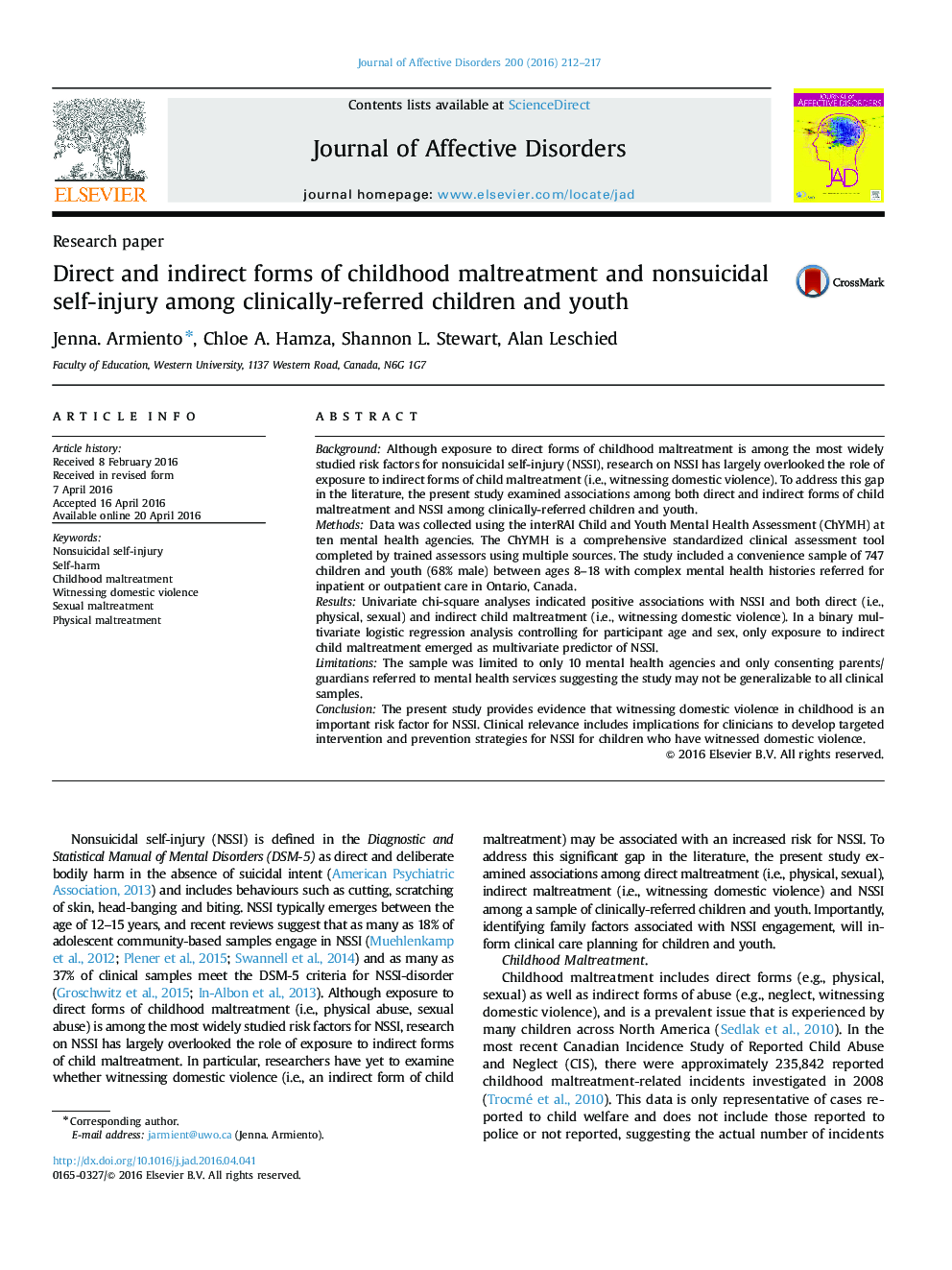| کد مقاله | کد نشریه | سال انتشار | مقاله انگلیسی | نسخه تمام متن |
|---|---|---|---|---|
| 6230104 | 1608125 | 2016 | 6 صفحه PDF | دانلود رایگان |
- Witnessing domestic violence has yet to be examined in association with NSSI.
- NSSI is associated with physical and sexual abuse and witnessing domestic violence.
- Witnessing domestic violence emerged as the major predictor of NSSI over other abuse.
- Vicarious trauma is an important risk factor for NSSI among children and youth.
BackgroundAlthough exposure to direct forms of childhood maltreatment is among the most widely studied risk factors for nonsuicidal self-injury (NSSI), research on NSSI has largely overlooked the role of exposure to indirect forms of child maltreatment (i.e., witnessing domestic violence). To address this gap in the literature, the present study examined associations among both direct and indirect forms of child maltreatment and NSSI among clinically-referred children and youth.MethodsData was collected using the interRAI Child and Youth Mental Health Assessment (ChYMH) at ten mental health agencies. The ChYMH is a comprehensive standardized clinical assessment tool completed by trained assessors using multiple sources. The study included a convenience sample of 747 children and youth (68% male) between ages 8-18 with complex mental health histories referred for inpatient or outpatient care in Ontario, Canada.ResultsUnivariate chi-square analyses indicated positive associations with NSSI and both direct (i.e., physical, sexual) and indirect child maltreatment (i.e., witnessing domestic violence). In a binary multivariate logistic regression analysis controlling for participant age and sex, only exposure to indirect child maltreatment emerged as multivariate predictor of NSSI.LimitationsThe sample was limited to only 10 mental health agencies and only consenting parents/guardians referred to mental health services suggesting the study may not be generalizable to all clinical samples.ConclusionThe present study provides evidence that witnessing domestic violence in childhood is an important risk factor for NSSI. Clinical relevance includes implications for clinicians to develop targeted intervention and prevention strategies for NSSI for children who have witnessed domestic violence.
Journal: Journal of Affective Disorders - Volume 200, August 2016, Pages 212-217
